Introduction
In the rapidly evolving landscape of operational efficiency, Robotic Process Automation (RPA) stands out as a transformative force reshaping businesses’ approach to repetitive tasks. By facilitating automation without the need for extensive coding, RPA is not only streamlining processes but also significantly enhancing overall productivity. From notable improvements in production speeds at St. James Winery to resolving bottlenecks in the finance department of Mass General Brigham hospital system, RPA’s impact is evident across various industries.
This technology allows companies to operate continuously, reduce human errors, and shift employee focus from mundane activities to more strategic initiatives. As organizations grapple with increasing demands and labor shortages, the adoption of RPA emerges as a sustainable solution, ensuring higher accuracy, reduced costs, and improved operational efficiency. This article delves into the essentials of RPA, its key components, and step-by-step implementation strategies to help businesses unlock its full potential.
Understanding RPA and Its Benefits
Robotic Process Automation (RPA) is transforming the manner in which organizations manage repetitive activities by automating them without requiring extensive coding. This technology is not only transforming operational processes but also enhancing overall efficiency. For instance, companies like St. James Winery have seen significant improvements in production speeds and margins by integrating RPA into their operations. This automation enables businesses to function around the clock, removing the necessity for overtime compensation or temporary personnel during busy periods, and ensuring greater precision by minimizing human mistakes in activities such as data entry and report creation.
A notable example is the finance department of Mass General Brigham hospital system in Boston, which faced bottlenecks in tracking healthcare providers. By forming an automation group and reorganizing workflows, they created a tool that automated data gathering and arrangement, allowing employees to concentrate on more strategic activities. This kind of implementation showcases how RPA can handle large volumes of data efficiently and integrate seamlessly with existing software systems.
The benefits of RPA extend beyond efficiency and cost savings. It allows employees to redirect their attention from routine activities to more strategic initiatives, fostering innovation and creativity. According to a recent Gallup survey, while 67% of workers never use AI tools at work, those who do report significant gains in productivity and efficiency.
By automating regular activities, RPA enables companies to sustain greater precision, lower expenses, and enhance overall efficiency. As organizations continue to face increasing demands and labor shortages, the adoption of RPA offers a sustainable solution for maintaining competitive edges and achieving operational excellence.
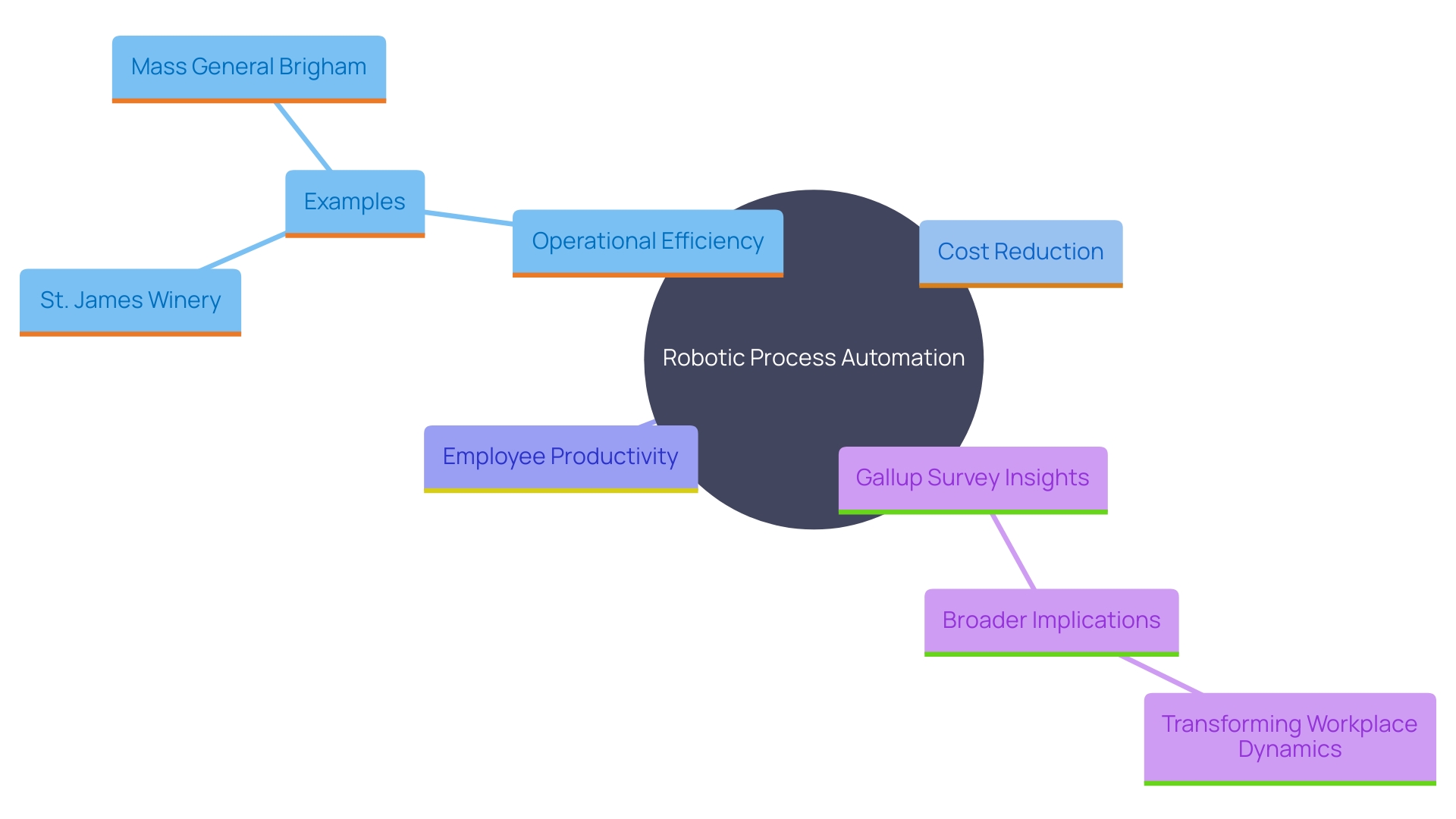
Key Components of RPA Bots
RPA automation tools are composed of several essential components, including the RPA software, user interface, and backend systems. The RPA software allows bots to engage with applications in a way akin to human users, automating repetitive activities such as data entry and form filling. This interaction at the user interface level is one of the core strengths of RPA, as it allows for seamless integration with existing systems, minimizing the need for manual intervention.
Understanding these components is crucial for the effective deployment of RPA solutions. For instance, at Delivery Hero, the implementation of RPA helped address the issue of employees getting locked out of their accounts. Before automation, the IT team would handle around 800 requests per month, each taking an average of 35 minutes to resolve. By automating the identity verification and access restoration process, Delivery Hero significantly reduced the downtime for employees, enhancing overall productivity.
Similarly, Spordle, a leading Sports Management ERP, leverages RPA to streamline customer support processes. By automating repetitive activities, the customer support team, directed by Gilles Taillon and Kim Thomas, can concentrate on more complex issues, ensuring high customer satisfaction and current knowledge bases.
Moreover, enterprises like Wesco are exploring the integration of RPA with advanced technologies such as AI and machine learning to unlock new levels of efficiency and productivity. The utilization of these cutting-edge technologies, combined with strategic partnerships and expert guidance, can elevate automation initiatives to new heights, as noted by industry experts.
In summary, the key to successful RPA deployment lies in a thorough understanding of its components and strategic integration with existing processes. By doing so, organizations can achieve significant improvements in operational efficiency and productivity.
Step 1: Identifying Tasks for Automation
The initial phase in executing RPA is to recognize activities that are repetitive, rule-based, and time-consuming. It’s essential to start with smaller, manageable activities before scaling up to more complex workflows. Engage with employees to understand their daily routines and pinpoint bottlenecks in their processes. This collaborative approach ensures the chosen activities for automation will lead to substantial efficiency gains. Employing tools like the Task Automation Index can assist in ranking activities based on their automation potential, taking into account elements such as standardized input, well-defined rules, repetitiveness, data dependency, and objective outputs. Continuous monitoring of these automated processes is crucial to document results and refine strategies, ensuring ongoing improvements and maximized benefits.
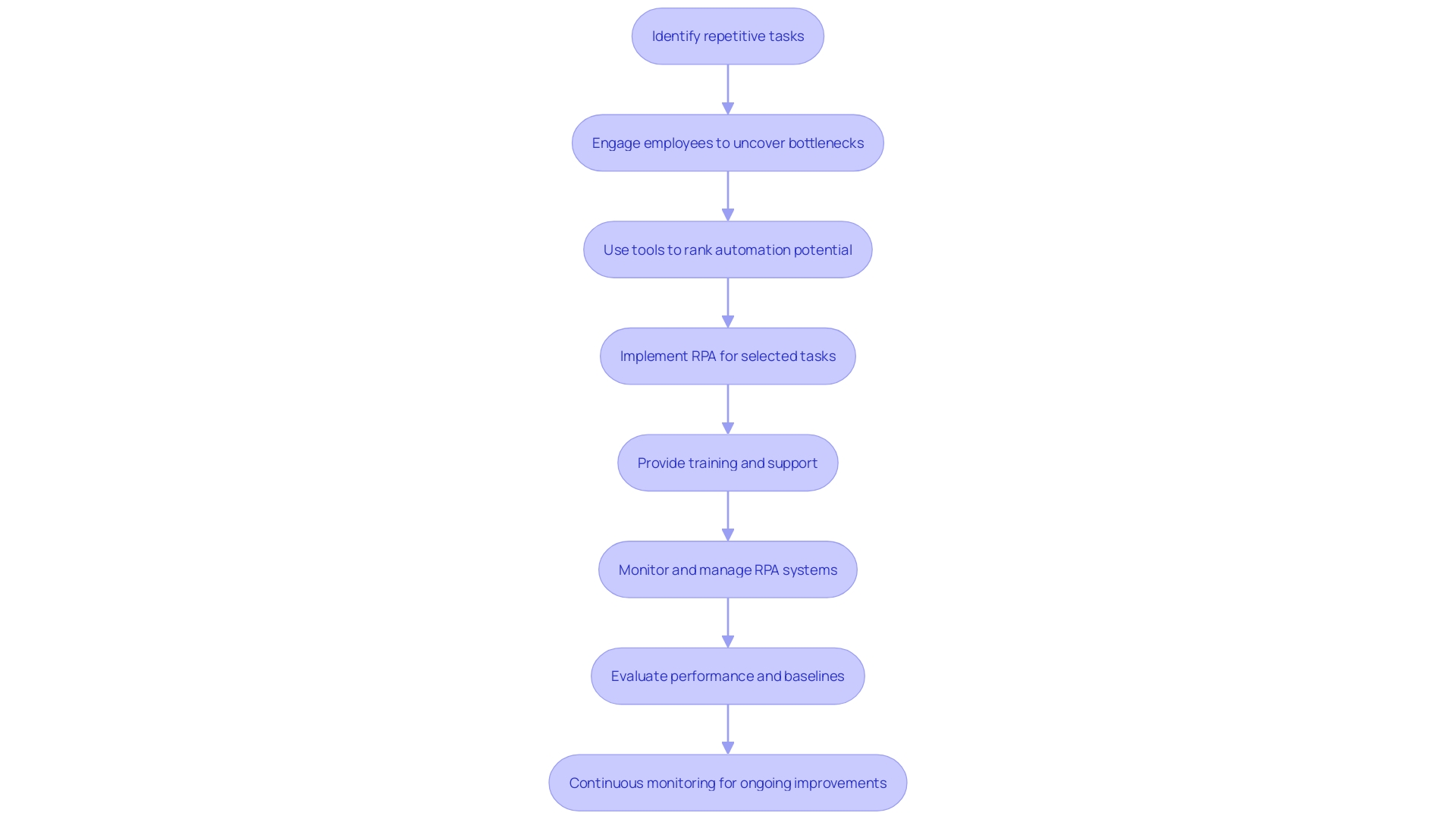
Step 2: Designing the RPA Workflow
Once tasks are identified, the next step is to create the process for the RPA bot. This includes mapping out each step of the process, determining decision points, and establishing the inputs and outputs. A well-structured process will assist in creating a more efficient bot. For instance, the engineering team at Dubber achieved notable success utilizing Temporal for their process orchestration, which enabled them to outline sequences of steps efficiently. Likewise, the execution of SmartFlow, an AI-driven RPA system, illustrates how sophisticated tools can adjust to new situations without human involvement, utilizing computer vision and natural language processing to improve efficiency in processes.
Case studies such as Rivian’s illustrate the importance of collaboration across dispersed teams, where specialized talents in different locations must work together efficiently. These efforts emphasize the necessity for strong and flexible processes to manage intricate, multi-location operations effortlessly. Additionally, experts emphasize that automation is not entirely hands-off; monitoring and management are crucial for ensuring stability and optimizing the return on investment. This is reflected in the results from Computational Management, which advises dividing tasks into fundamental components and utilizing task specification templates to choose the most appropriate AI solutions for incorporation into processes.
In practice, a collaborative method in creating the process, involving both analysts and those accountable for the activities, ensures that all steps are well-documented and easily understood. This method not only simplifies the automation process but also makes it adaptable to changes and improvements over time, thereby enhancing operational efficiency and productivity.
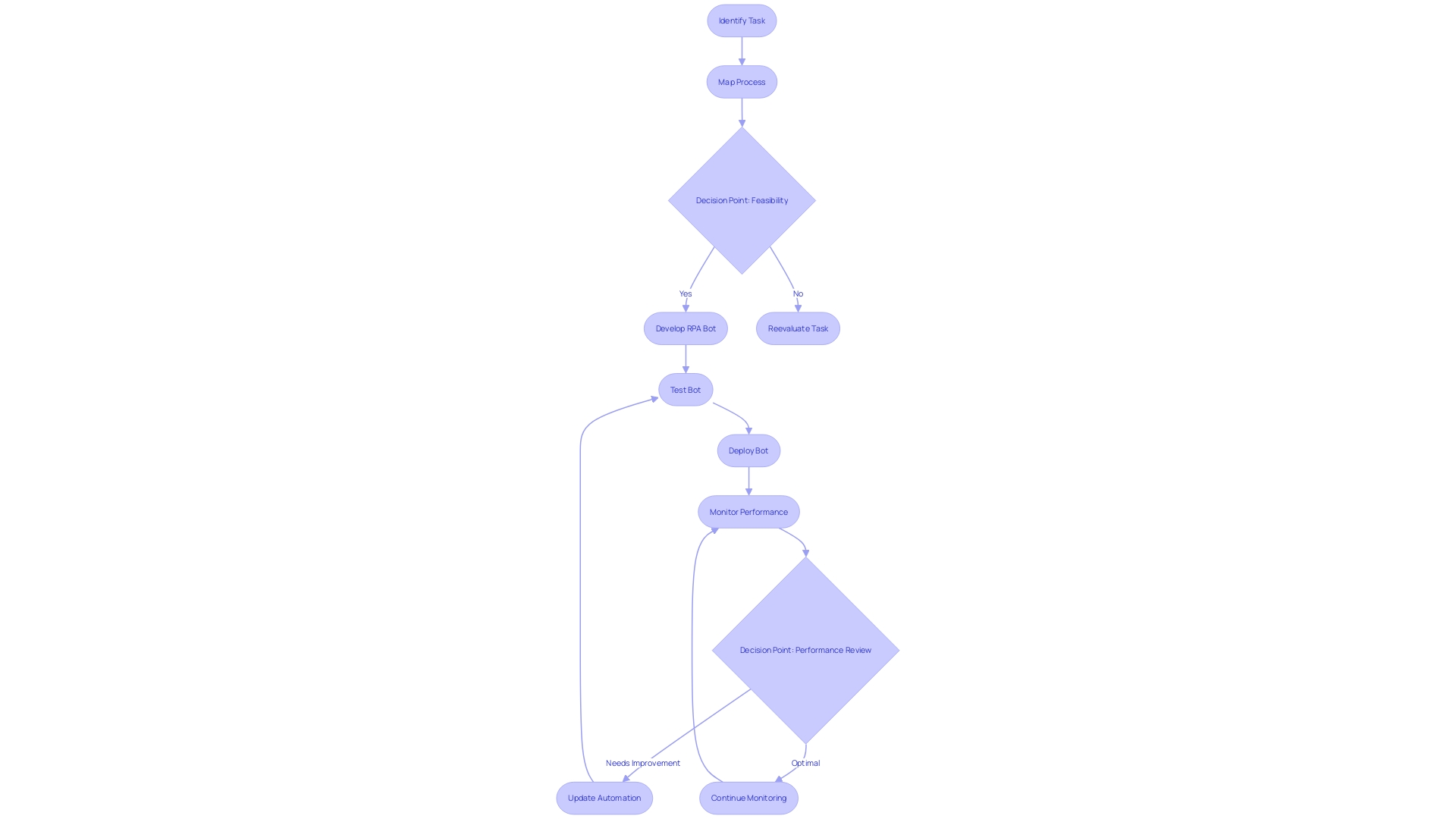
Step 3: Developing the RPA Bot
After creating the process, the next step is to develop the RPA bot using the chosen RPA platform. This process entails setting up the bot to conform to the established procedure, merging it smoothly with current systems, and guaranteeing strong exception management. Incorporating integrations may require fine-tuning to manage permissions and access controls effectively, as observed with SuccessFactors API, where Role-Based Permissions (RBP) were essential for initiating processes. Moreover, it is vital to monitor the bot’s performance and health, similar to how Amazon CloudWatch provides metrics and logs to proactively identify and resolve issues. By 2025, the automation market is anticipated to attain $18.45 billion, emphasizing the increasing significance of these technologies in improving productivity and operational efficiency.

Step 4: Testing the RPA Solution
Before deploying the RPA bot, thorough testing is necessary to ensure it operates as expected. This involves a multi-step approach, beginning with clear planning and preparation. Defining the scope, tool selection, and framework setup are crucial initial steps. Just like setting the GPS before a road trip, you must clearly define your objectives, scope, and metrics for success before starting your RPA testing.
Testing isn’t just about functionality; it encompasses the bot’s interactions with databases, networks, and other applications, offering a comprehensive view of the system’s health. Unit testing focuses on individual components, while end-to-end testing examines the entire workflow in a simulated environment that mirrors the production setup. This ensures the bot can handle tasks without errors and adapt to changes in the software environment.
Designing test cases for RPA is akin to preparing for a cooking show. You need the right ingredients (test data), the right tools (automation scripts), and a well-thought-out recipe (test case). Considering that RPA tools engage with various systems, your test cases ought to encompass all potential situations, including edge cases. This meticulous approach not only identifies issues that need resolution before full-scale implementation but also saves time and money by preventing costly errors in live environments.
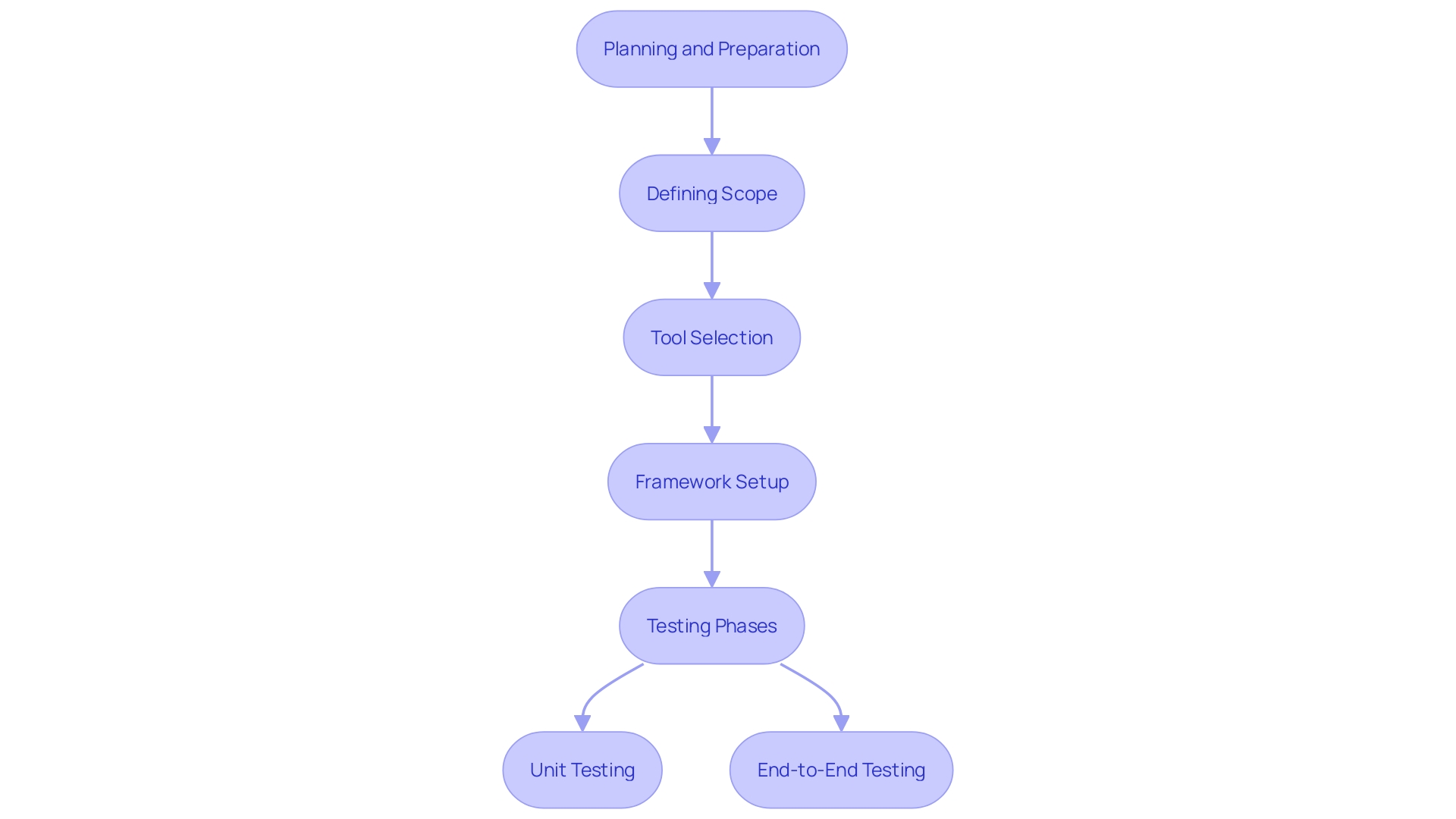
Step 5: Deploying and Monitoring the RPA Bot
After successful testing, the RPA bot can be deployed into the production environment. However, continuous monitoring is essential to ensure the bot performs as intended and to quickly address any errors or changes in the underlying processes. Just like any other sophisticated system, RPA is not a ‘set it and forget it’ solution. Organizations need to actively manage and monitor these automated systems to close any operational and governance gaps.
As seen with Electrolux Group’s collaboration with ABB, the implementation of automation significantly improved their production line’s efficiency and safety. The introduction of the YuMi cobot automated the gas leak detection process, eliminating repetitive manual operations and enhancing accuracy. This case highlights the importance of continuous oversight and adaptation to maintain optimal performance and leverage the full benefits of RPA.
Monitoring also aids in recognizing and managing distribution shifts, ensuring that the automated systems adjust to changes in the environment and continue to operate properly. For instance, Bosch’s AI-based energy management system in Changsha continuously retrains algorithms to improve success rates, demonstrating the necessity of ongoing adjustments and refinements.
In conclusion, while RPA bots can transform operational efficiency, their success hinges on diligent monitoring and management. This approach not only ensures seamless operation but also maximizes the return on investment by maintaining the stability and effectiveness of the automation.
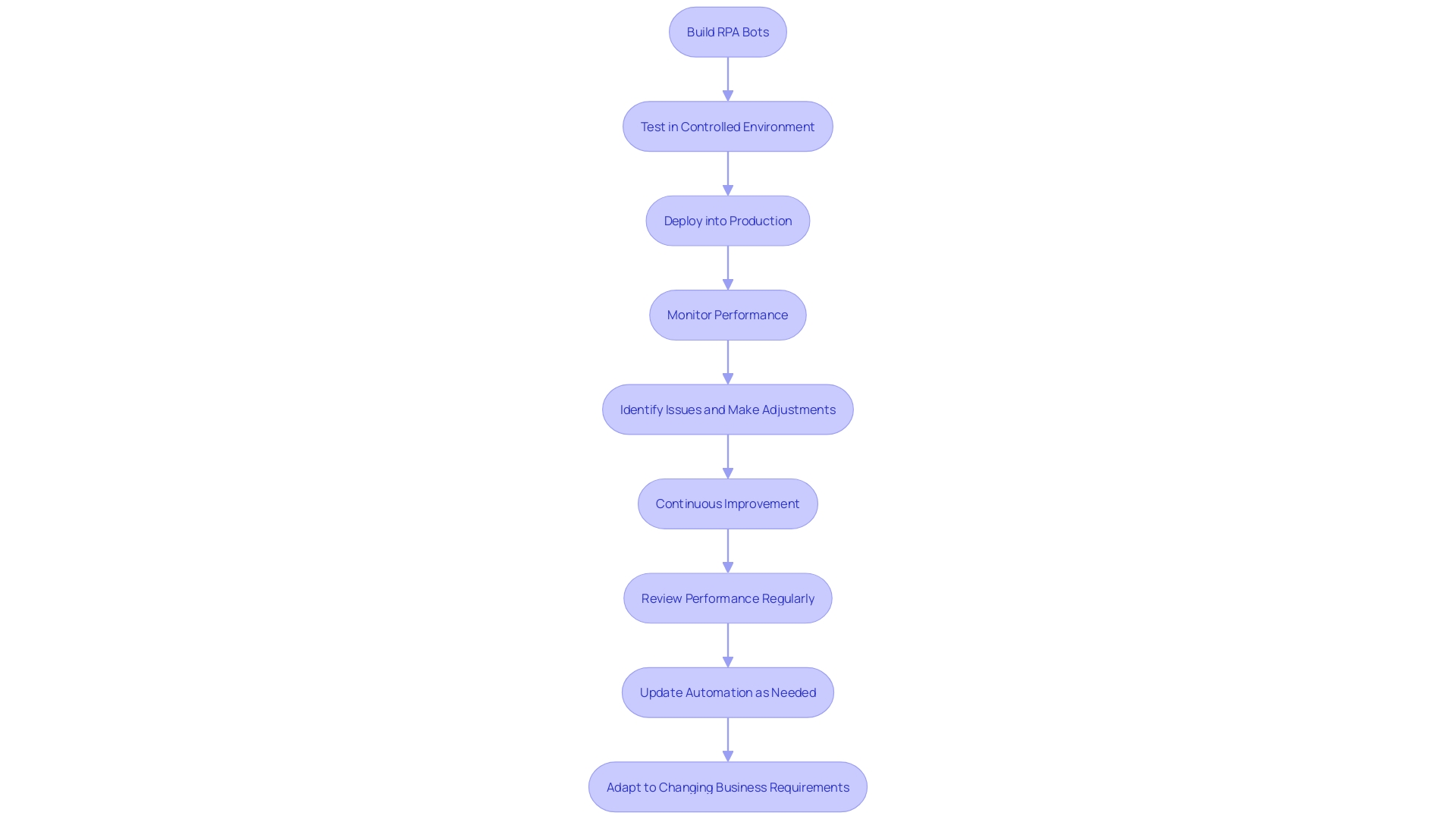
Measuring Success and ROI of RPA Implementation
To evaluate the effectiveness of RPA implementation, it’s crucial to establish key performance indicators (KPIs) and measure the return on investment (ROI). These KPIs should include metrics like time savings, error reduction, and overall productivity improvements. For instance, the finance department of the Mass General Brigham hospital system in Boston faced significant inefficiencies with manual data collection. By implementing an RPA tool, the department automated data gathering and reduced the workload on employees, resulting in substantial time savings and enhanced productivity.
Additionally, it’s important to recognize that RPA isn’t a set-it-and-forget-it solution. Continuous monitoring and management are necessary to ensure consistent performance. The latest research indicates that 90% of automation projects fail due to technical issues, implementation costs, or lack of an overall vision. Therefore, a comprehensive framework for managing RPA, including roles, responsibilities, and processes, is essential for success.
Organizations such as Protaform are leveraging Industry 4.0 advancements with smart sensors and automated data collection to enhance production planning and control, demonstrating the transformative potential of effective KPI management. By focusing on these key areas, organizations can clearly demonstrate the value of RPA, driving efficiency and productivity improvements across their operations.
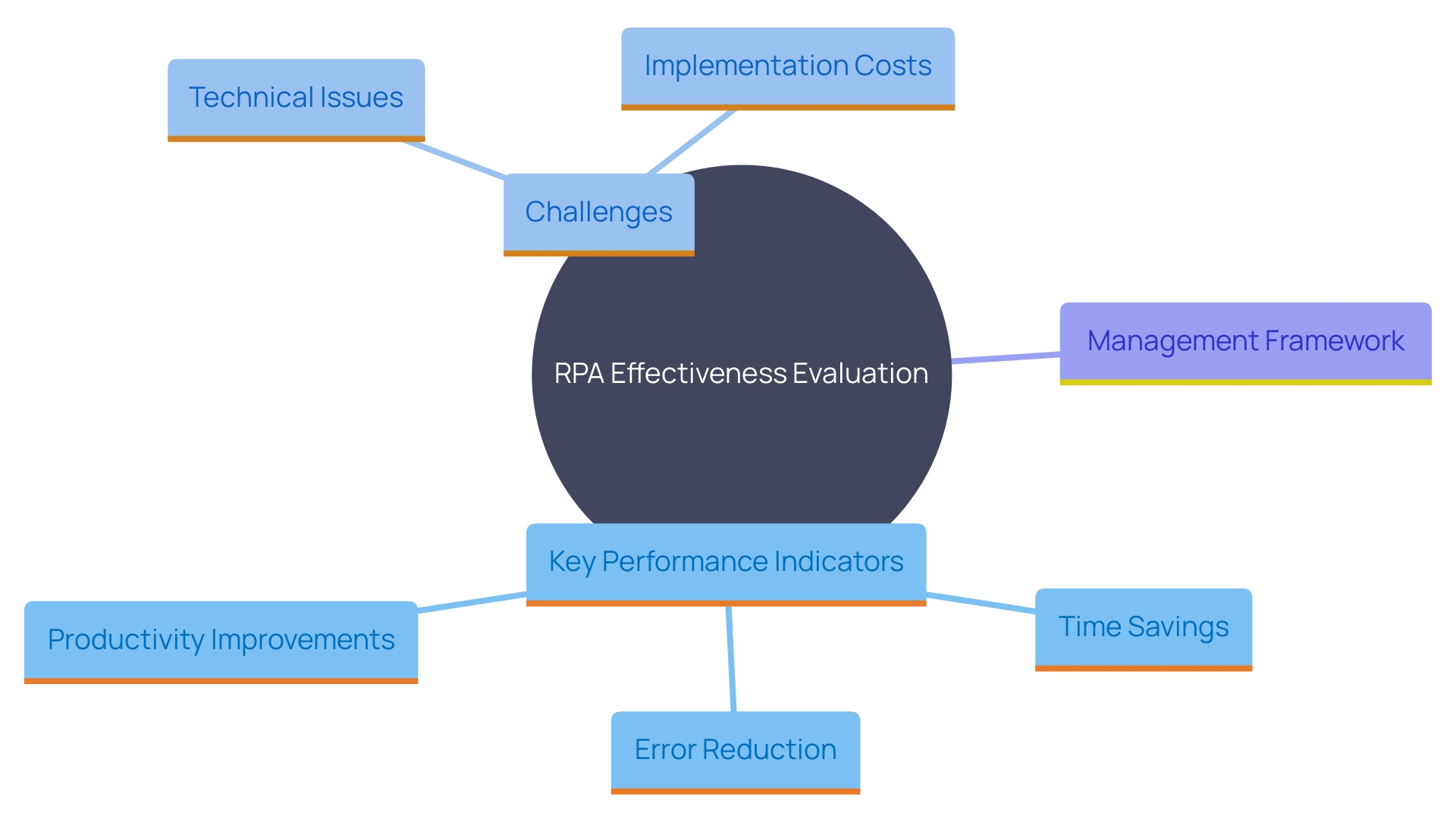
Conclusion
Robotic Process Automation (RPA) is transforming how organizations manage repetitive tasks, significantly enhancing operational efficiency and productivity. By automating processes without extensive coding, companies like St. James Winery and Mass General Brigham hospital system have reduced human errors and freed employees to focus on more strategic initiatives, fostering innovation.
Understanding RPA’s key components is essential for effective implementation. By utilizing user interface interactions and backend systems, organizations can streamline processes and save time. Success stories from Delivery Hero and Spordle highlight how RPA enhances productivity and customer satisfaction through routine task automation, with advanced technologies like AI further boosting effectiveness.
Implementing RPA requires a structured approach, from identifying tasks for automation to ongoing monitoring after deployment. Each phase, including workflow design and testing, necessitates careful planning to ensure optimal performance. Continuous oversight is crucial for adapting to changes and maintaining automation effectiveness.
Measuring success through key performance indicators (KPIs) and return on investment (ROI) ensures that RPA initiatives yield meaningful benefits, driving long-term improvements.
Adopting RPA addresses immediate operational challenges and positions organizations for sustainable growth in a competitive environment. By leveraging this transformative technology, businesses can enhance agility, reduce costs, and provide greater value to their customers.

